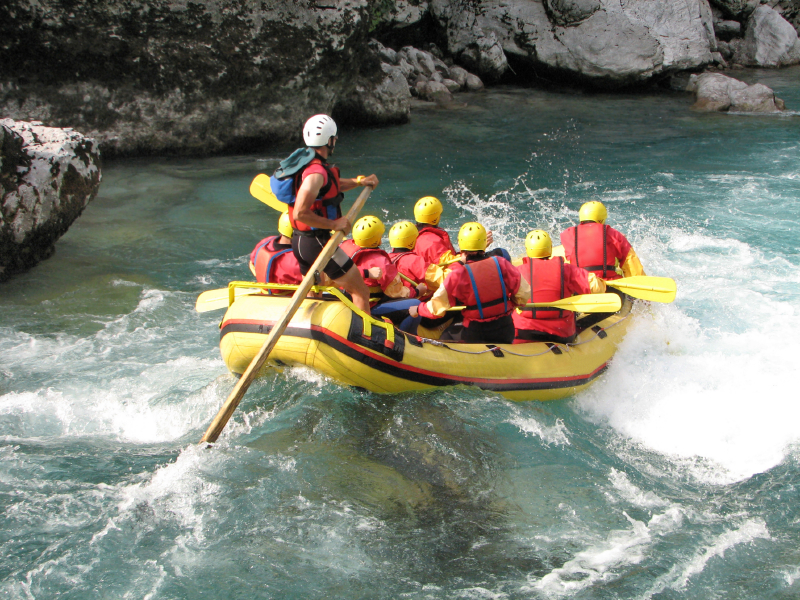Imagine this: you’ve just left your boss’ office and you were given the ball on a major, new, cross-functional project. You are buzzing with ideas about who you need, what you need, and the time and effort it’s going to take.
The question running through your mind in those moments is, “what should I do first?” When I get asked this question, this is my response: first, build the raft. The raft will be the tool that draws the resources you need to you, rather than you having to chase them down.
You’ve got the ball. Now you need a “raft.”
The “raft,” in this case, is that simple vessel that will carry you, your team, and your project through the rough, uncharted waters of the next few months to completion. To create it, you lash together sturdy lengths of strategy and understanding – and you use your new ideas as the sail.
The 3 Key Elements of Your Raft
Your raft is a container or framework for your project that you and your soon-to-be-formed team can use anywhere and anytime to recruit support and contribution.
A good raft has three things:
- A narrative framework
- A financial framework
- A visual framework
Let’s look at each of these elements in turn.
#1: The Narrative Framework
The best narratives are based on good storytelling technique, which means there’s a hero. In your breakthrough project’s story, the hero is your customer. Good story structure has been studied for years, and has been summarized in numerous ways. For your purposes — running a successful, breakthrough project — you just need a very concise narrative that creates a compelling statement of the current problem you are solving for the customer. This narrative should include:
- What triggered our catalyst, driving the need for a project
- The key insight and solution you are pursuing
- The ultimate benefit for the end customer and the enterprise
Here’s an example of the narrative when I was working on a project for wirelessly-connected vehicle safety systems:
- The current transportation system results in 40,000 highway deaths per year.
- The addition of passive safety in vehicles and infrastructure has reached a zenith in its effectiveness.
- By actively having vehicles communicate with the infrastructure and with each other, we believe we can mitigate damage in up to 76% of the collisions.
- This could lead to 25,000-30,000 saved lives per year.
#2: The Financial Framework
The narrative will get people interested and keep your team focused, but you’ll need to back up the narrative with clear, tangible financial benefits. This requires research, but there are a multitude of sources for this kind of information, such as government studies, industry white papers and academic studies. In the vehicle safety system example, Cisco created a public white paper that laid out the financials:
Vehicle connectivity has the potential to unlock more than $30 billion in crash-related value for passenger vehicle owners, insurance companies, and society every year.
What you, the program manager, need to do is take this macro analysis and build a relevant model for your organization. Think along the lines of finding your specific role in the solution, your product’s or service’s contribution to that role, and ultimately what financial flow will accrue to your organization based on your participation.This takes some work, but once quantified, becomes a very valuable tool to set priorities at the enterprise and functional level.
#3: The Visual Framework
Every relevant program needs to have an easily understood sketch or graphic that instantly appeals to those who are too busy to dig deep into the narrative or financials. There are many ways to do this, but one that I have found effective is the business model canvas made popular by Alex Osterwalder.
A good, high-level visual for vehicle safety systems is this graphic created by the U.S. Department of Transportation.
(For a fuller visualization of the system, take a look here.)
Now, put the raft to the test.
In order to start building this raft, it’s a good idea to do the homework that we talked about in the last blog post.
Once you have a basic raft — your rough narrative, financial and visual frameworks — start using it in every discussion you have with management, team members, and (under NDA) your partners and suppliers. Listen carefully and refine your raft as you get feedback. Quickly, your raft will begin to resonate with all your stakeholders.
A strong raft will allow your project to keep your momentum as the inevitable challenges arise, and as you need to have the hard trade-off discussions. While building a raft can be done internally, it really helps to get some objective outside help to speed up the process.
Which pieces of your raft do you have in place, and which are you missing? Send me an email or Tweet me @scottpropp.
Related posts you can benefit from…


